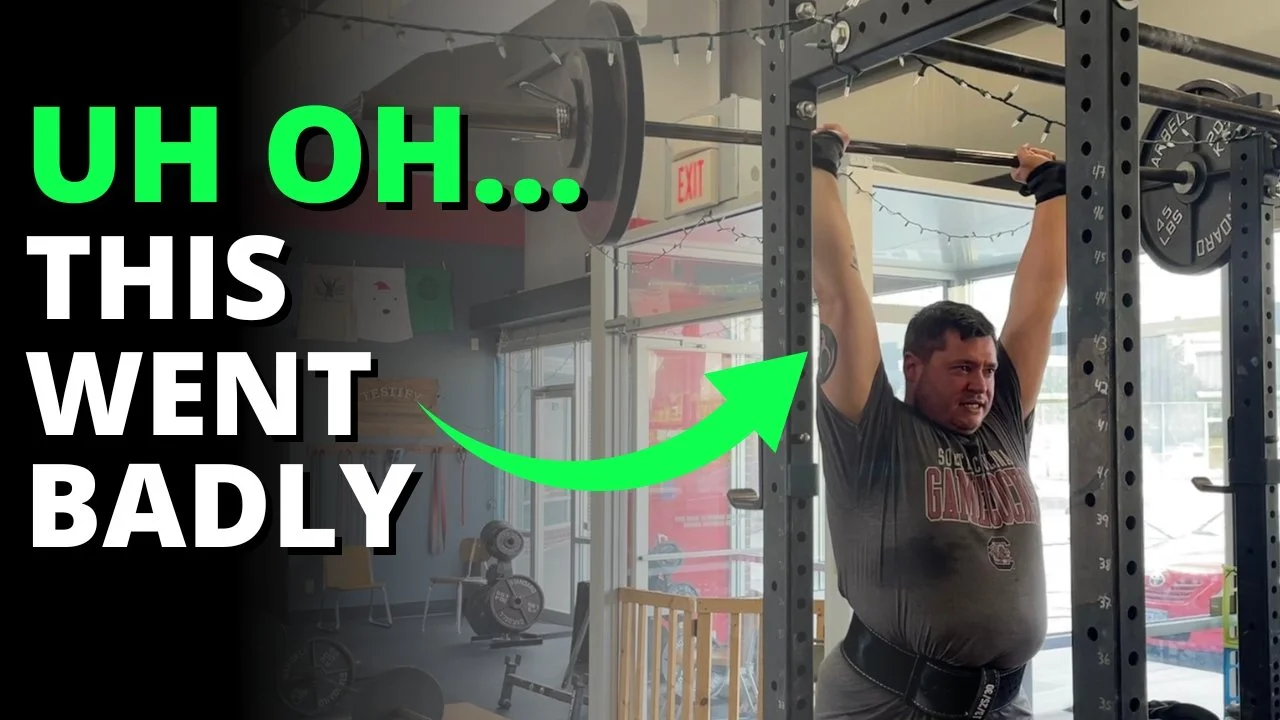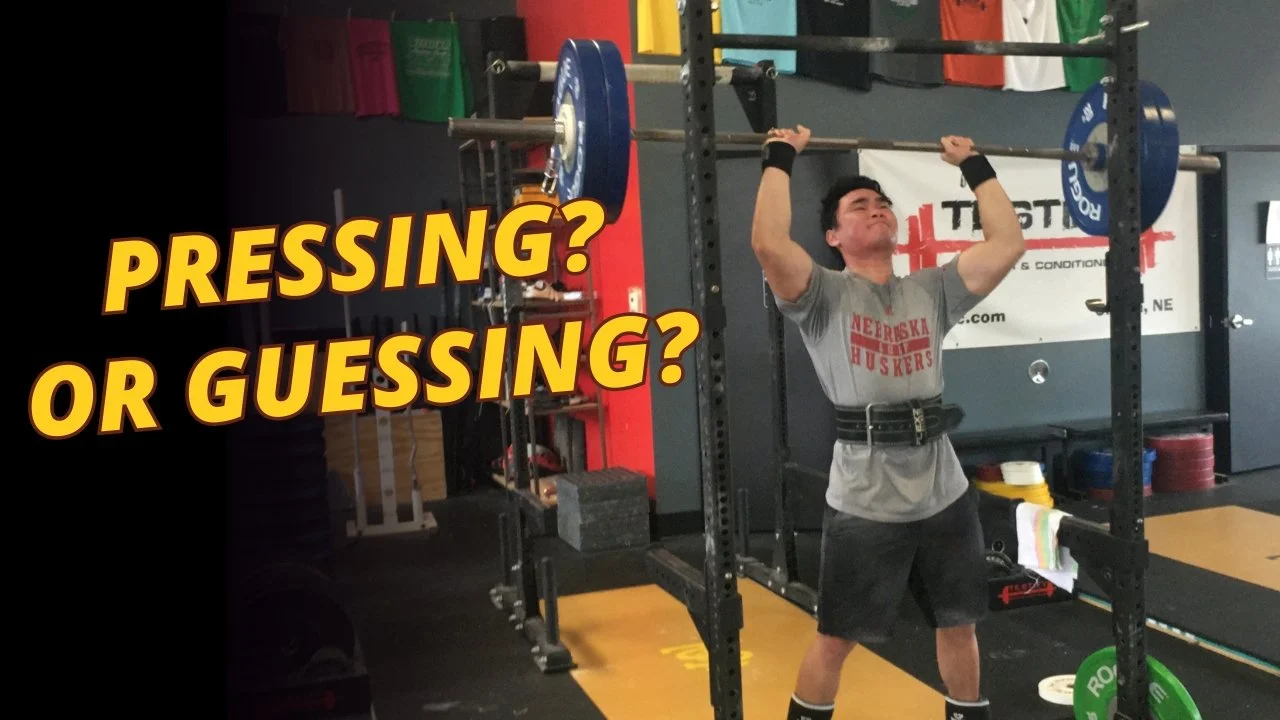This Weird Press Error is A Problem
/If you’re making this mistake during the press, it’s highly likely that you’re unaware of it, so let’s identify it quickly and fix it just as fast.
The Problem
When you’re set up to press, you’ve established the correct start position - your elbows are slightly in front of the barbell (as viewed from the side), you’re standing tall, your chest is up, your stance is sufficiently wide, and you’re about to start the hip motion to initiate the press.
However, instead of reaching forward with your hips, you accidentally throw your shoulders backward. This is a problem as it ruins the bounce (and therefore the upward momentum) created by the hip movement.
Be sure to watch one of the videos in this article to see this error in action (as well as the solution!).
Should the Shoulders Move Backward?
The shoulders do, in fact, travel backward a bit as you reach forward with your hips. This is a natural counterbalancing movement - your hips go forward as your shoulders and head go back a bit. This hip movement allows the face to get out of the way of the bar and also creates that lovely bounce we’re looking for to start the barbell’s upward movement.
However, there is a big difference between the natural counterbalancing movement of the upper body and the erroneous and purposeful throwing backward of your shoulders. The first helps the press while the latter ruins it.
figure 1: at left - becky correctly throws her hips forward. at right - becky incorrectly throws her shoulders backward. note the position of her head against the barbell in the background in the two photos.
How to Know if You’re Committing This Error
To ascertain whether or not you’re making this mistake, pay attention to your feet. When you correctly reach forward with your hips, you should feel your weight momentarily shift to the balls of your feet (Figure 1 - left photo).
However, if you are incorrectly throwing your shoulders backward (Figure 1 - right photo), you will feel your weight momentarily shift to your heels instead, making for a weak press.
The Solution
If you feel your weight shifting backward instead of momentarily forward, cue yourself to “get onto the balls of your feet” when you reach forward with your hips (you heels should still stay connected to the floor).
Practice this slowly a few times, and as you get the hang of it, you can be more aggressive and speed up the movement.
To see this error and the solution in action, I’d recommend watching one of the short videos included in this article.
As always, we hope this helps you get stronger and live better.
-Phil
PS: Whenever you want even more Testify in your life, here are some free resources:
Book a free intro and strategy session with us HERE.
Pick up a free copy of Testify’s Squat Guide: 12 Tips to Improve Your Squat Now HERE.
Get our free weekly email - containing useful videos, articles, and training tips - HERE.
Follow Testify on Instagram HERE.
Subscribe to Testify’s YouTube channel HERE.
(Some links may be affiliate links. As an Amazon Associate, Testify earns from qualifying purchases.)








